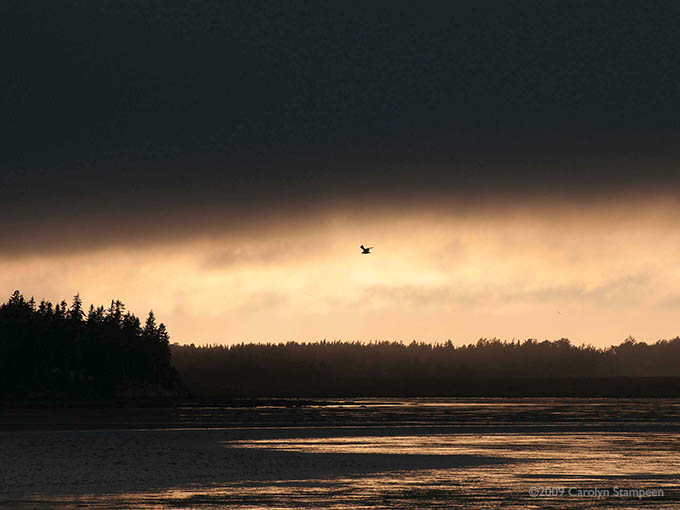
Many of us have been frustrated by this new world that contains a pandemic that has been limiting our ability to travel and spend time in places we love. The fellow and I have been missing our Nova Scotia beach, instead being confined to the heat and humidity of Toronto. We have a cottage that sits along a bay that is off the Northumberland Strait, which separates PEI from the mainland. While it is in Nova Scotia, our view across the bay is of New Brunswick. A wonderful place to recenter, to enjoy family and friends, and to find calm, rain or shine, high or low tide. This red sand beach is magnificent in all its moods.
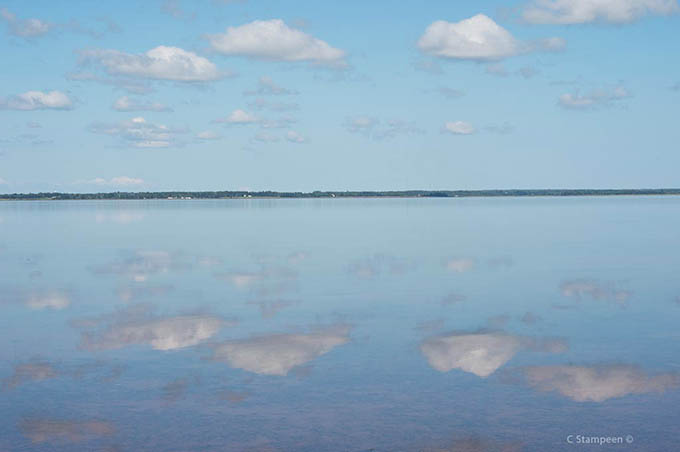
On sunny days, puffy white clouds often appear that drift along the scene’s horizon from left to right. If the water is in, the clouds pull their reflections along with them.
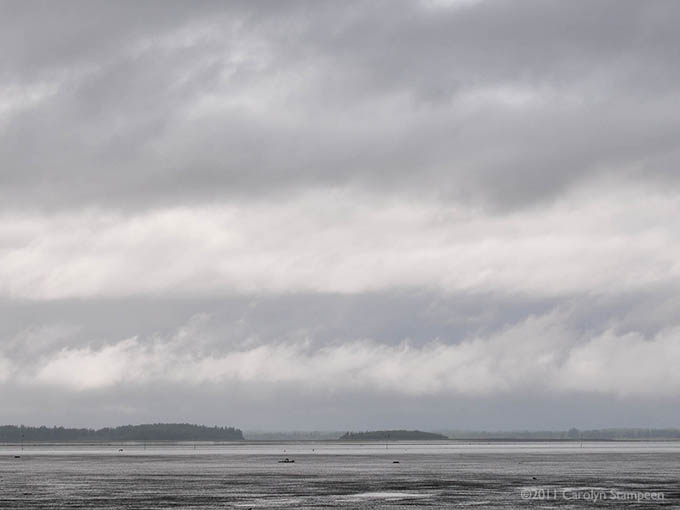
When clouds block blue sky, the sky is still remarkable. Different layers and cloud types moving to different winds, it often feels as if one can reach up and touch them.
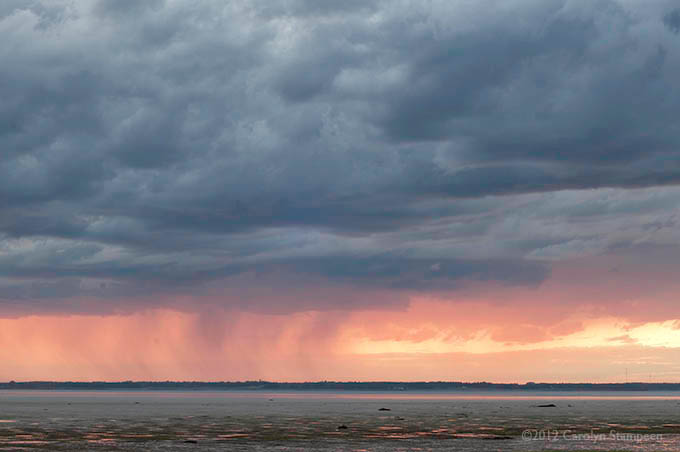
We met this rain while running errands in Moncton, New Brunswick, about 70 km away from our cottage. We parted ways with it when we turned off the highway onto the country road that would bring us across the border and we got to watch the weather move along the opposite side of the bay as the sun was setting.
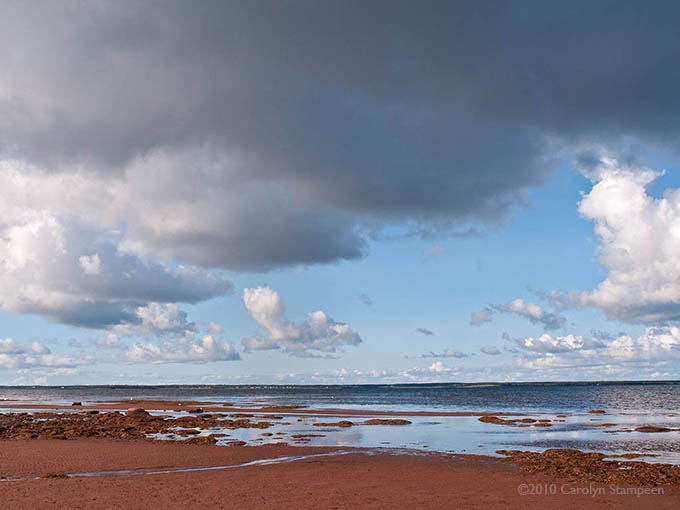
This was a perfect summer’s day for a beach walk, with only puffy white clouds sailing peacefully in the sky, when a dark cloud appeared above me and provided strange company. It followed me around for a while, with an occasional rain drop, while all around was blue sky with some white, fluffy clouds. I literally walked with a dark cloud hanging over my head. It finally peeled off and went out into the bay.
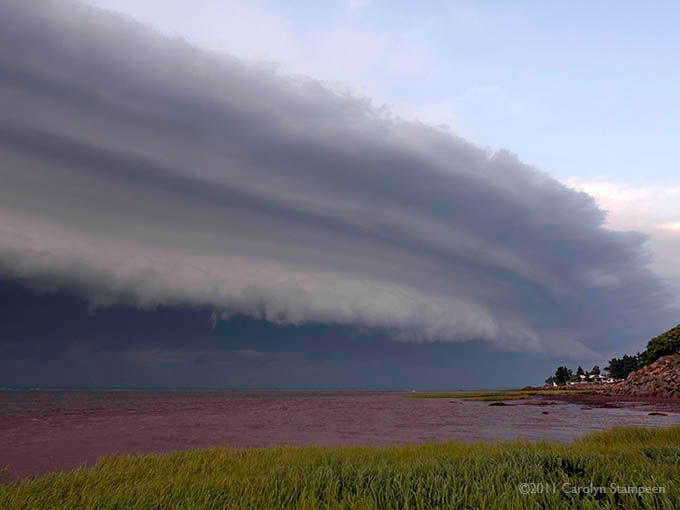
A shelf cloud! This was an amazing experience, though at the time, I was trying to figure out how terrified I should be. It was a very hot summer’s day, not a cloud in the sky, and I was enjoying the last bit of shade on the deck, when I noticed some clouds emerging from the horizon across the bay. As I watched, there seemed to be a dark grey wall heading towards us. The closer it came, the colder it became. I soon needed a sweatshirt. The wind picked up and I was running around the yard checking to make sure any loose items were put inside. The clouds passed over and it became very dark, as well as extremely windy and cool. It brought a bit of rain, but the winds were so strong that whole thing passed over fairly quickly, leaving behind a cloudless, hot summer’s day.
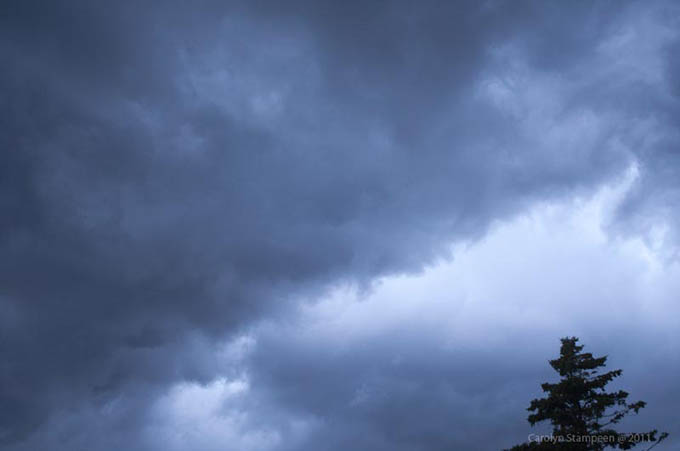
This is what it looked like when looking under the shelf cloud. What isn’t captured is the speed at which those clouds moved or that tree swaying!
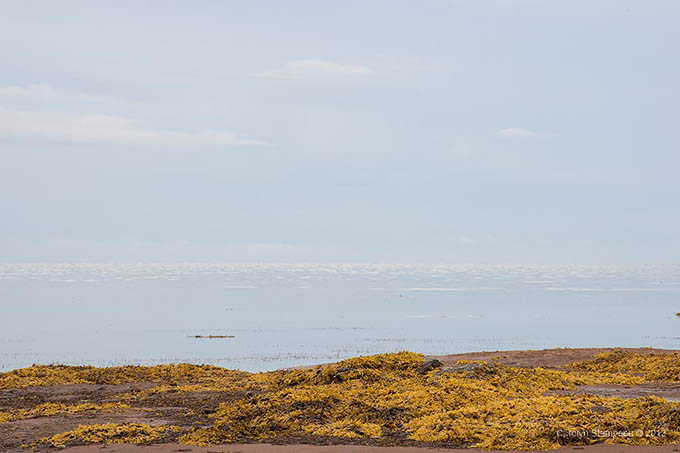
The locals call this Crab Point. It’s about a 20-30 min walk down the beach, and, as the only rocky part of the beach, this is where the gulls come to drop their moon snails and clams to open them up for easy dining on the creatures within the shells. The seaweed makes great habitat for crabs, hence the name. This is close to sunset. The water is deeper here than in front of our cottage, and this is looking out towards the Northumberland Strait. The magic here is with the white clouds reflecting on the sparkly part of the water. As the sun continues to lower, the clouds will begin to turn pink and the white reflection will turn pink as well. Unless, of course, clouds on the horizon form to prevent the sun from painting the scene.
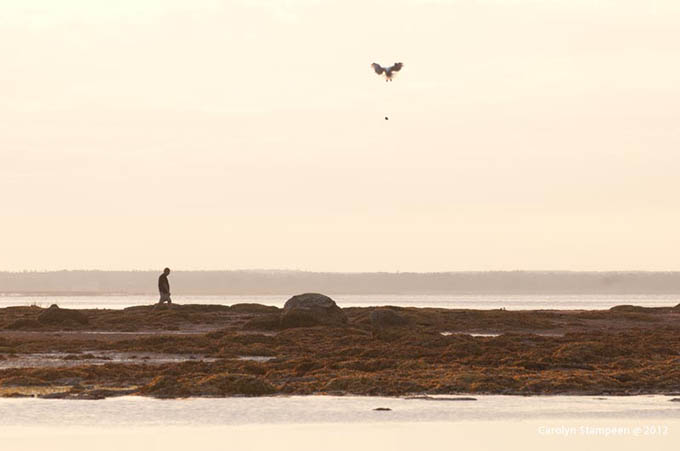
The clouds are thick enough here to prevent a full-blown sunset, but not so thick that the sun can’t tint the world orange. At Crab Point as the tide comes in, this walker doesn’t notice a gull dropping a projectile. The gull is hoping to have a meal before the rocks get covered and while it’s light enough to see its success.
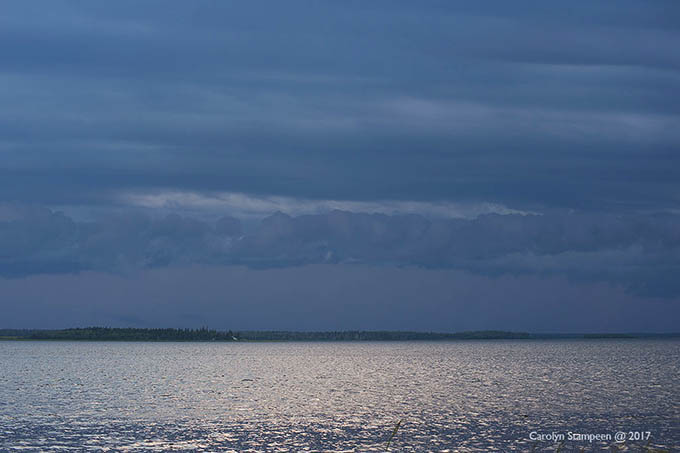
Silver and blue are beautiful colours.
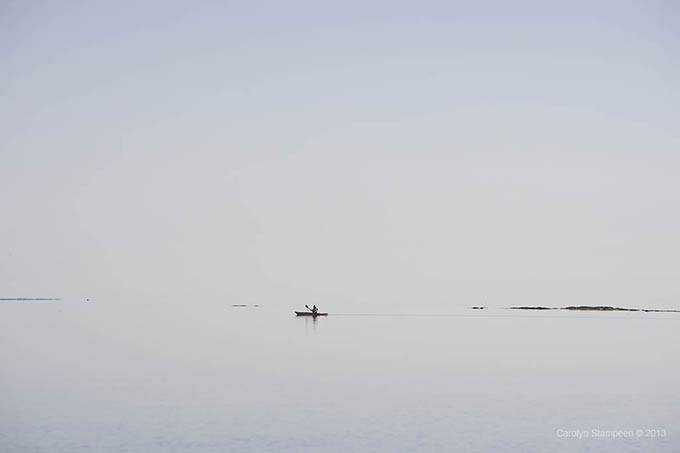
The water is rarely this still and perfect, at least for long. This kayaker is enjoying it while it lasts.
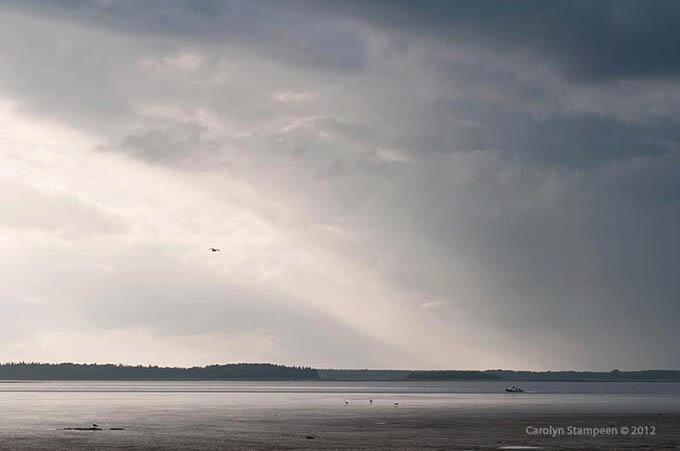
The tide is going out, not leaving much water for the boat, but he’ll get home before the rain.
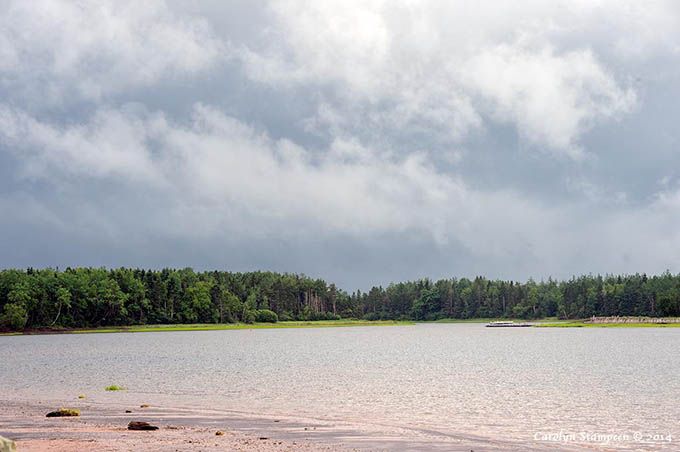
This is where the boat is headed. See the dip in the trees? A river empties into the bay from over there, and is from where most of the boat traffic comes. There are lots of cottages along the water and a marina, in which boats don’t just moor, but has a ramp to allow day boaters access to the water.
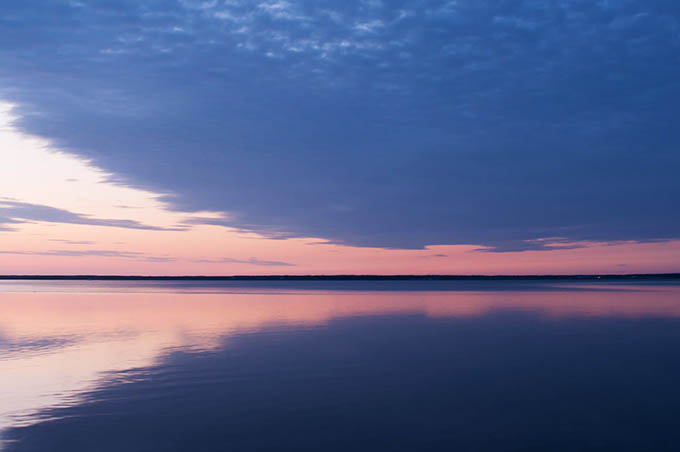
Often, clear, warm summer days end up with cloud banks forming along the horizon as the sun lowers, so that the sun sinks unceremoniously behind a curtain of white. The flip side is that often on really cloudy days, as the sun sets, the clouds along the horizon unzip to allow colour to seep out. How spectacular the colour becomes will depend on where the sun is when that happens.
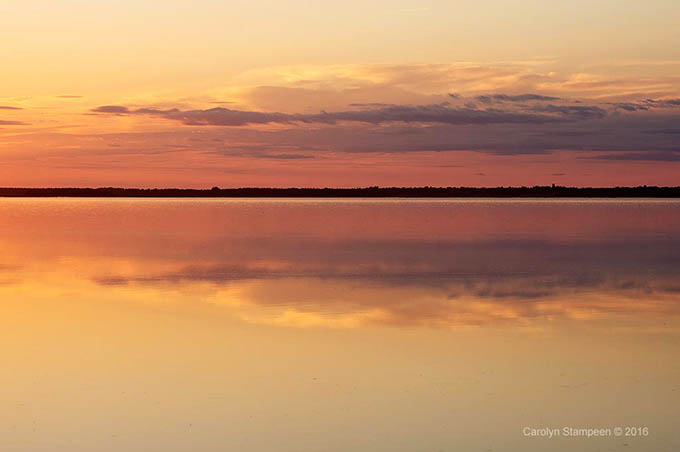
Clouds did move in at the end of this day, but weren’t enough to entirely block the sun. The golds and oranges are mirrored in the water of high tide. Wading through this water is like moving through a painting.
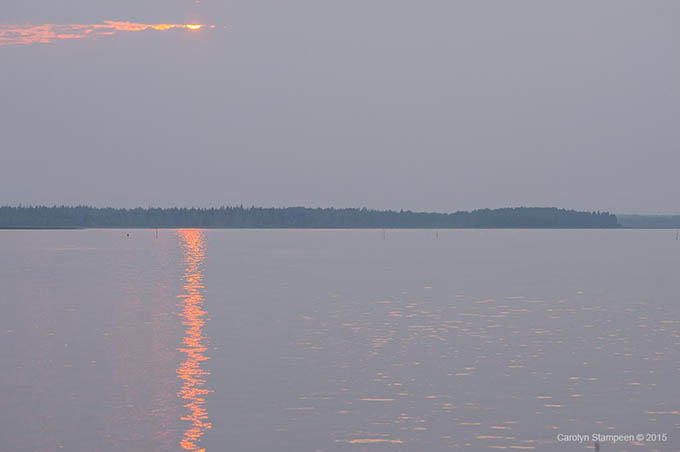
The sun was allowed to peak out briefly to turn the world lavender with a splash of orange.
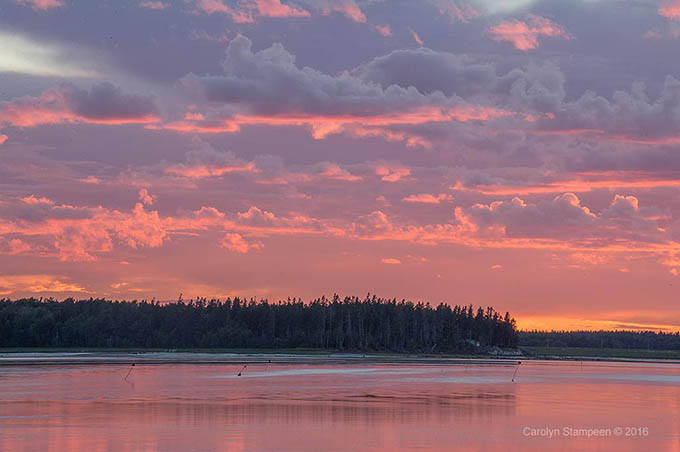
On this magical evening, the clouds on the horizon opened at just the right time, allowing the sun to light up the clouds with magnificent colour, and the water was high enough to be able to amplify the colour. This was one of the sunsets that had all humans along the water stopping whatever they were doing to just admire and ooh and ah.
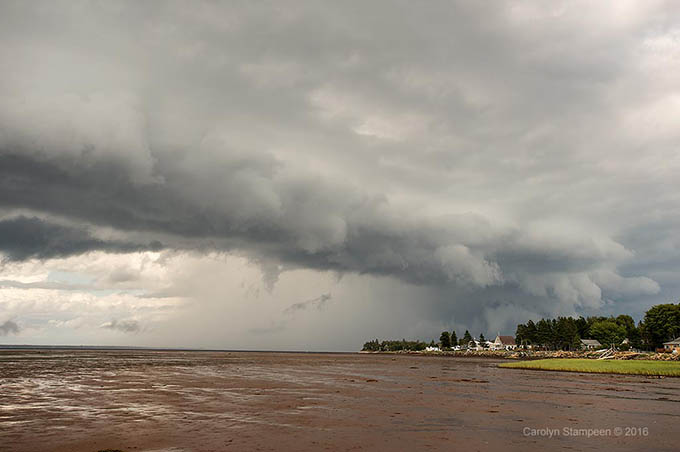
Another storm! As the clouds continued over land, they started to dissipate.
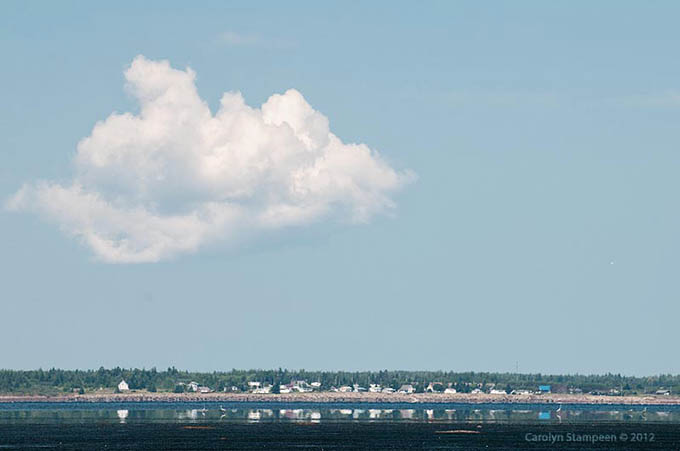
One puffy cloud moving across the horizon.
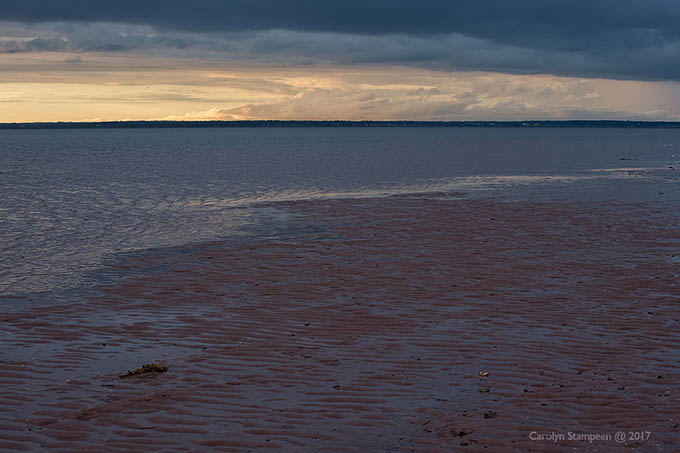
Red sand turns lavender when there is a thin layer of water over it or still-wet sand as tides retreat, and the light hits it the right way.
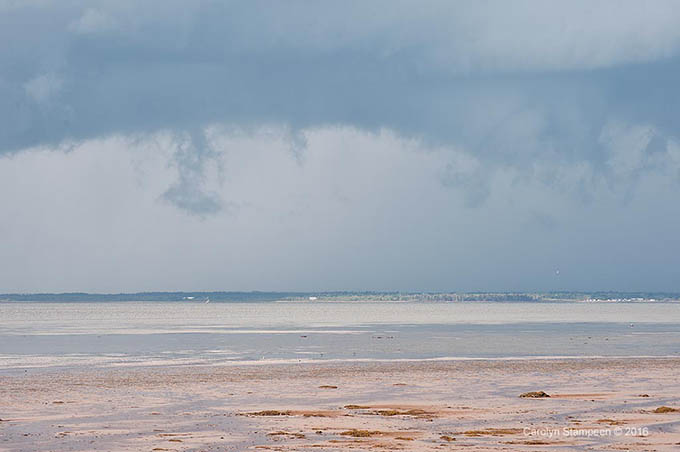
The clouds!
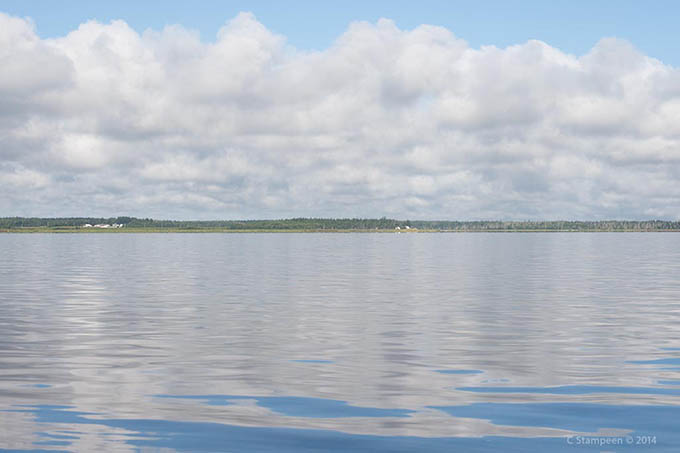
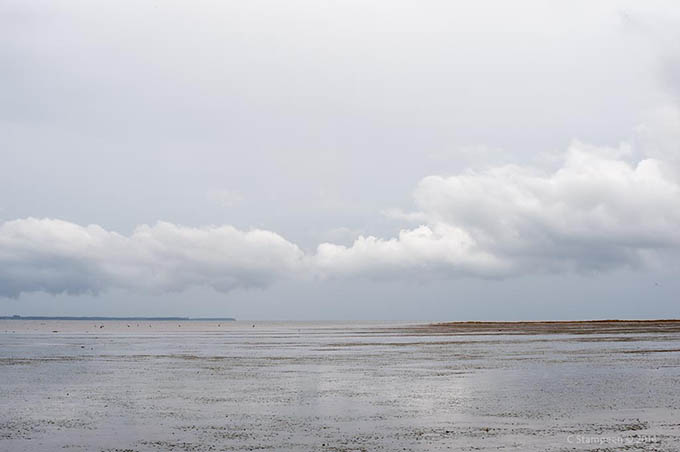
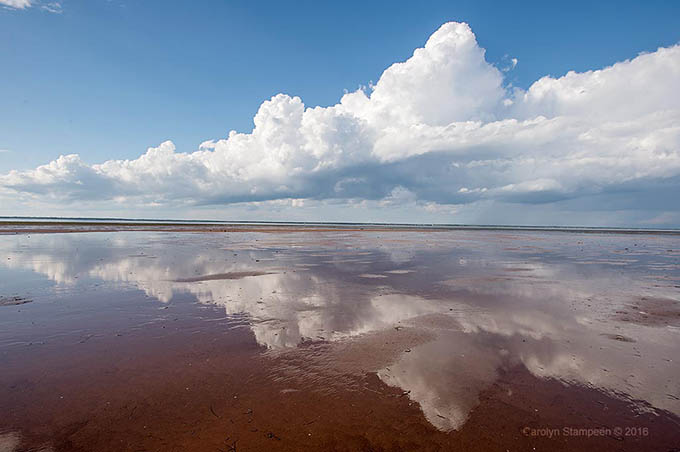
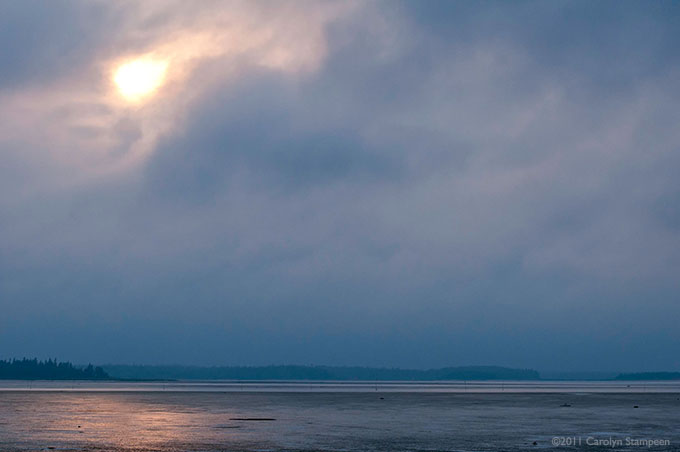
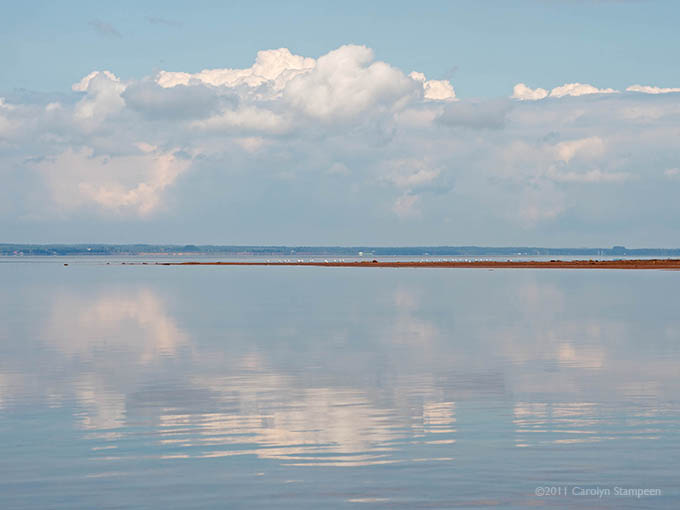
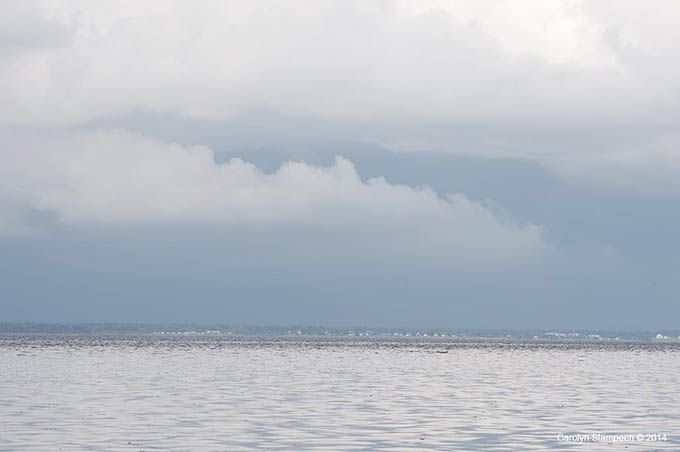
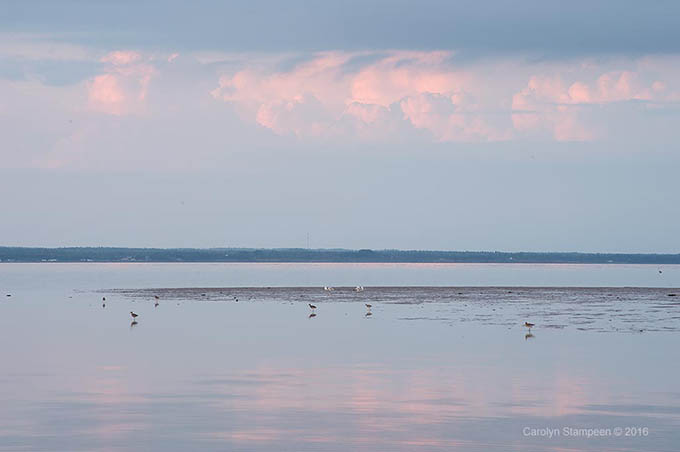
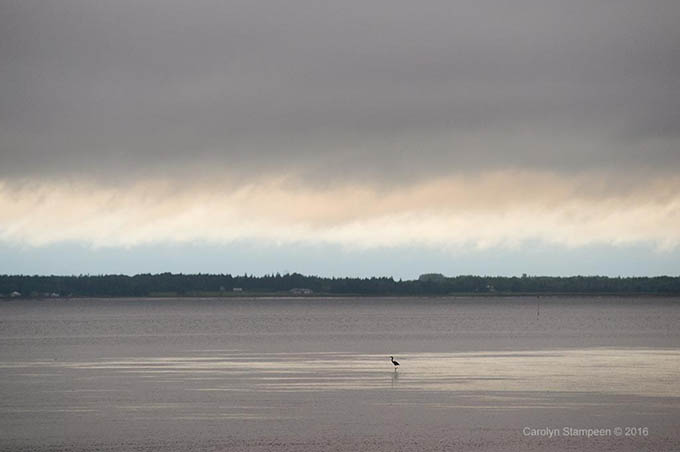
Depending on water levels, the red sand here may influence the colour of the water. The more shallow the water, the more lavenders, reddish or muddy colours may be seen.
Water is reflective, though, so mostly, the colour of water will be influenced by what’s going on in the sky. Blue sky, blue water; grey sky, grey water.
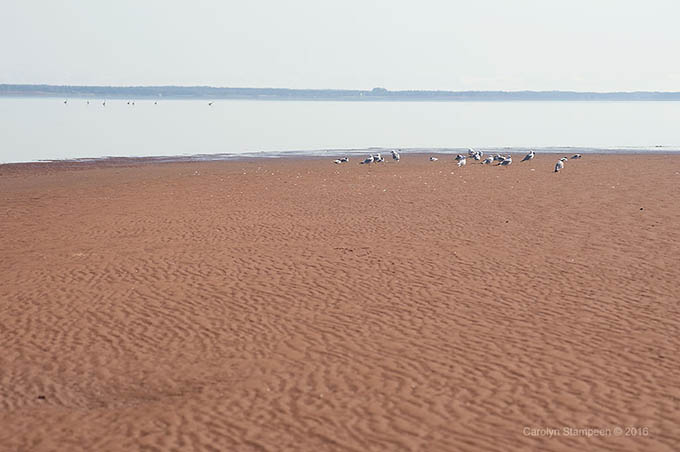
Can’t talk about a red sand beach without a good look at the sand. At low tide there is a lot of beach to walk. Here, the tide is coming back in.
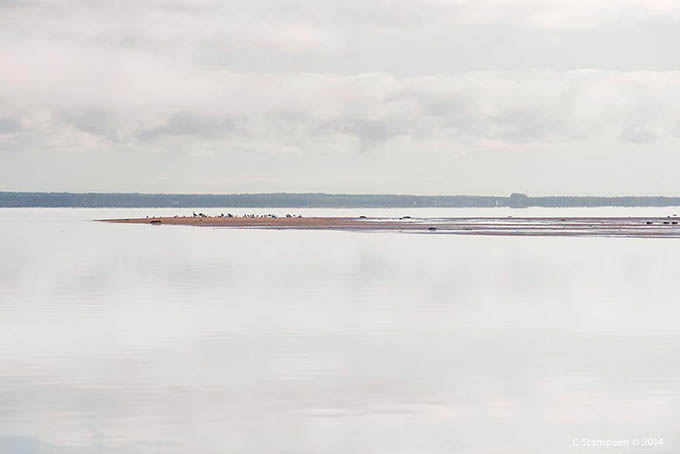
As the bay continues to fill up, the gulls will eventually find themselves on an island, as they will continually shift to the high part of the beach and water will surround them.
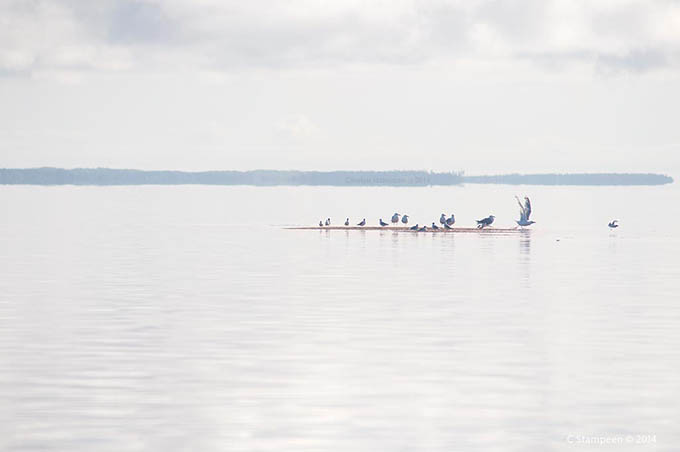
As they run out of space, more and more birds will fly off, though a few will just remain until the last dry spot is covered and the water picks them up and allows them to float.
The size of the gulls here isn’t indicative of age, but species. We have Black-backed, Herring and Bonaparte’s gull here, listed in order of largest to smallest. We also have some Common Terns who sometimes hang out with the gulls.
The best part of inclement weather is not only spectacular clouds, but rainbows! This double rainbow was a reward for any walking along the beach while at low tide after a rainy morning.
Crab Point is the point of land to the left. Our cottage is off to the right of the rainbow.
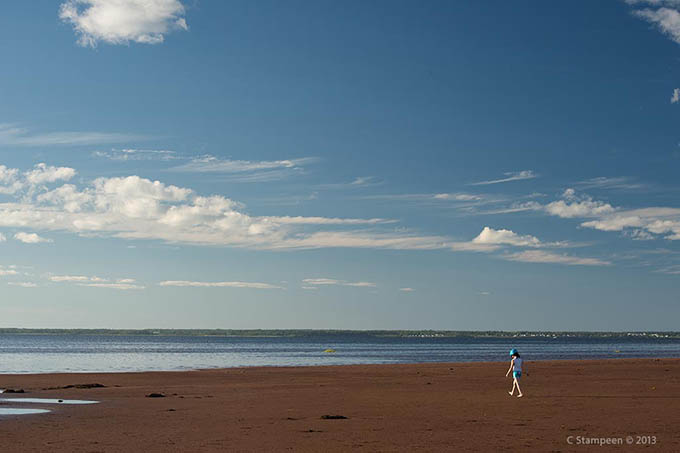
We miss our red sand beach, and all the Atlantic beaches we would visit during the summer. White, red, sandy, rocky, Nova Scotia has it all. To those living there year round, what a spot for quarantine! Beautiful, sunny days or moody and brooding days, this is a spectacular part of the world.
Beautiful work, Carolyn – I really enjoyed both the photos and your narrative. Thanks for putting it together.
Thanks so much, Alexander.